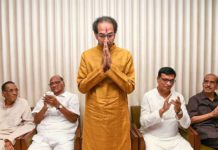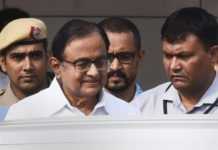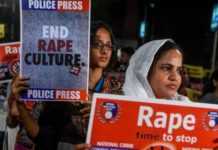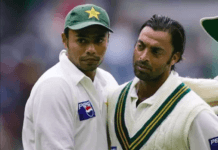
‘Watershed moments’ in the modern world history are those when world shifts its gears and gets adapted to new rules.Such watershed moments in near history are many like end of Cold War, 9/11, 2008 Sub-prime crisis, Arab spring etc. Recent developments around the world from Trump’s election to murder of journalist Jamal Khashoggi, seem to suggest world is again on the cusp of experiencing another ‘watershed moment’.
Historical Background :
The world order which we are witnessing today was devised by United States of America (US) in 1945.Soon after the World War II ended in 1945, United Nations (UN) and Bretton Woods Institutions (like World Bank, International Monetary Fund) were established with the aim to maintain peace and international order. But as against the expectations, world was soon divided into two military camps i.e.US and Soviet Union or USSR.
- Cold War era (from around 1949 to 1991) : Cold War era was marked by bipolarity where two superpowers existed simultaneously. Though both US and USSR avoided direct military confrontation, world witnessed high degree of tension, arms race,thrust for nuclear weapons and space militarization. There were two systems of economy and governance existed. Thus the tussle was not only between ‘US and USSR’ but also between ‘capitalism and communism’ as also between ‘liberal democracy’ and ‘dictator state’.
- Post- Cold War era (from 1991 onward) till beginning of Trump era (2016) :USSR disintegrated into 15 different nation-states in 1991. World became uni-polar with US as the sole superpower. US-promoted economic liberalization was adopted by most of the countries. Globalization became transformative tool in the hands of US to use fiercely for bringing world in order of its accordance.Using its military might, US invaded Iraq in 2003 and rendered it directionless without any future rebuilding plan. Announcing ‘Global War on Terrorism’ after 9/11 incident, it deployed its military personnel into yet another country – Afghanistan and placed its feet in Asia. With the aim of toppling the Syrian government, it started supporting and fueling rebellious movements in Syria, the move which gave ISIS – one of the deadliest terrorist organization – space and time to spread world over.

Post-Trump World (towards de-globalization ?):
- Trump’s withdrawal from World Order : After assuming the world’s most powerful office, Trump started unscrewing the order-construct created by US, the step which apparently could be seen towards de-globalization. As promised in his election campaign, which was painted by slogan ‘Make America Great Again’, he first pulled out of ‘Paris Agreement on Climate Change’, showing the world how seriously President of lone superpower looks at danger of climate change.He abandoned Trans Pacific Partnership (TPP) which was part of America’s ‘Pivot to Asia’ to contain China. With imposing additional sanctions on Iran, he unilaterally pulled out of Iran deal which his predecessor was successful to bring about with help of other P5+1 powers, showing once again his recklessness towards world order. He frequently threaten to pull US out of NATO (North Atlantic Treaty Organization), military alliance between US and other European countries. Citing reasons of injustice being done against US at WTO (World Trade Organization),the biggest rules-based multilateral trade body, he threatens to pull out of it.
- US relationship with Russia and China : US sees Russia-China axis with suspicion.And this is evident from the fact that,under Trump’s presidency, as unveiled in US’s new ‘Security Strategy’ last year in December, US calls China and Russia as “main threats”. Since last few months, US – China trade rivalry has reached to an unprecedented level.Recently in this month, US has pulled out of Intermediate-range Nuclear Forces (INF) Treaty with Russia, which was cold-war era treaty banning medium range nuclear missiles. This could mark beginning of new arms race.
- Post-Brexit : Brexit phenomenon can be seen more of weakening of European Union (EU) than of rationalization of world politics. After several waves of de-colonisation in last century, European colonial powers like those of United Kingdom and Italy no longer remained superpowers. Marred with problems of migration from Africa, economic slowdown in countries like Greece, and Trump’s protectionist, non cooperative stance, their influence in world affairs has been severely marginalized.
Emergence of assertive China :
China’s rise is reflected in its more assertiveness. According to President Xi Jinping’s “two guides” policy announced earlier in 2018, China should guide ‘the shaping of the new world order’ and safeguarding international security. Through projects like ‘Belt and Road Initiative’, China has increased presence in Eurasia and IOR (Indian Ocean Region). Also because China is so integrated into economic, political and cultural spheres of world that west, unlike erstwhile USSR, will not be able to contain China. China’s territorial assertion in its surrounding, its naval presence in Indian Ocean, its heavily economic engagement with African countries and its alleged influence in politics of some countries like Australia, show China’s thrust to play a bigger role in shaping new world order.
India as the leading global power and champion of rules-based world order(NAM 2.0):
Traditionally, India has been following middle path shown by ‘Gautam Buddha’, which reflects in its Foreign Policy. Even during era of Cold War, where world was divided between two military camps, India had adopted path of ‘Non-Alignment’ i.e. not to enter into any of the camps for war purpose, but receive support from both for developmental purpose.India’s this “middle-path” stand is reflected in recently concluded India-Russia Annual Summit 2018, where India signed‘Forgo S-400′ system deal, successfully handling US pressure of imposing sanctions. BRICS, of which India is founding member,was established to cooperate between members and minimize their dependence on west economic order of WB, IMF etc.Through forums like G4, India asserts need for more inclusive and progressive reforms in Security Council of UN. In WTO, it is de facto leader of the developing world.

Inevitability of US in New Order :
Though US has been protectionist since post-Trump era, its influence in international affairs is not likely to vanish in recent times and it will remain a key player in world politics. In its document “Security Strategy”, where US called China and Russia “main threats”, it called India “an ally” and “a leading global power and strategic and defense partner”. Thus US wants India to play bigger role in strategic affairs.But India should cautiously move ahead without blatantly following any one camp but also not mistaking ‘Non alignment’ as ‘Non involvement’.
Being run by world’s biggest rule-book – the Indian Constitution – India knows importance of rules-based order. With shifting of world’s geopolitical centre from Euro-Atlantic to Indo-Pacific, India is set to play a major role in world affairs.
(This article by author was also published in the students’ magazine of Savitribai Phule Pune University’s Media Department)




























































[…] Reconstructing New World (dis)Order […]
[…] Reconstructing New World (dis)Order […]